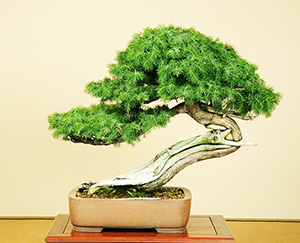
Indoor bonsai trees are, as their name says it, the ones that are grown in an indoor environment. Because of their characteristics, tropical and subtropical species make the best indoor bonsais. One of the most common are ficus, and most of its variations. The Chinese elm, Hawaiian umbrella and Brazilian hibiscus are also popular. However there are many more you can use. You can ask in your local store or check out the indoor section of our virtual store here.
The first thing you should know about growing an indoor bonsai is that there’s a small climate and environment in your home, in which your bonsai will be living. Trees and plants are basically outdoor creatures so keep in mind that you’re setting and artificial scenario for them. This is not necessarily a bad thing, but you must be aware of that when you start. Remember, if you take care of your tree constantly and keep checking on it every few days it’ll flourish and grow strong.
INDOOR PLACEMENT, HUMIDITY AND WATERING
It is very important to know where to place your indoor bonsai tree. You need to have a direct sunlight exposure, the bigger the tree, the more sunlight it’ll need. You should also check that every part of the tree is exposed because if only one side of it is hit by sunlight it could star growing in that direction only. If this happens move your tree every few days. Morning and afternoon sun are the most important for the tree.

In some cases, even though is not strictly necessary, people use artificial lights and fluorescent tubes, with the help of automatic timers. The same happens with humidity control, if your house gets really dry in winter, you can use a humidifier. But this depends of course of the climate of your city. It isn’t the same to have an indoor bonsai in Miami than in Boston. You must also know that the climate at your home must be constant, drastic changes can damage your indoor bonsai. The same happens with winds, you should always keep your miniature tree protected from strong winds. Tropical species can tolerate room temperatures all year long, but are very sensitive to cold winter weather. Template species can take lower temperatures.
As we said before on this site, there’s no specific routine for watering a bonsai. However there are ways to be aware when it’s needed. Check constantly the soil of your indoor bonsai tree, it should never be completely dry but moist and wet. Always be careful not to overwater it. One of the main indicatives when you are overwatering your tree is that some leaves will start to turn yellow. You must also keep in mind that tree species are different, and some may need more water than others. You can always ask for advice in your local store. If you got the chance to collect rain water do it and use it with your bonsai.
Fungus, plagues, pests and insects can be a pain when it comes to indoor bonsai. Be sure to remain vigilant. Ladybugs and worms are not a problem for your miniature tree, but grasshoppers are. If you see any particular reaction take pictures and ask for advice in your local store before taking any measures. There are also many forums on the web that can be helpful.
As we said before, it is really hard to give specific instructions on how to grow an indoor bonsai or any bonsai whatsoever because they depend on a number of factors, like specie and climate. So it’s always good to ask everything you need to know from your supplier. You can also check out the books we recommend on the right side of the website. However, when it comes to indoor bonsai, there’s one book you should definitely check out: Indoor Bonsai for Beginners by Werner Busch. It tells you everything you need to know on this specific subject. It’s a great guide and is very cheap. You can check out our review here or buy it directly on amazon.com. You won’t regret it.